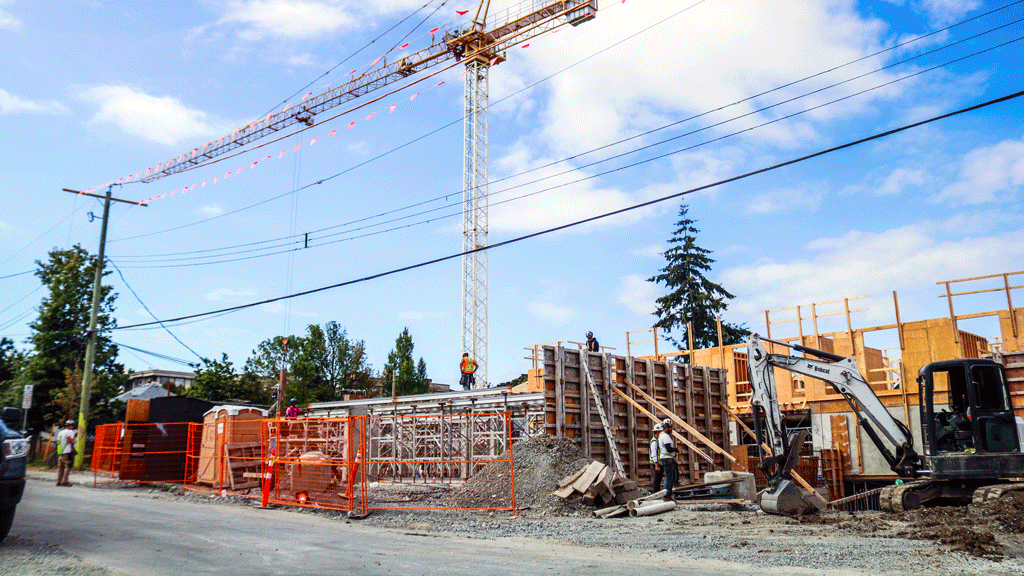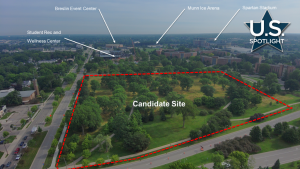Victoria officials are hoping to stop the exodus of young families by encouraging the construction of “missing middle housing” with proposed policy changes.
The city’s Missing Middle initiative is a response to census data that shows the region is losing young families as their housing needs evolve. Officials noted many in the city are looking for housing options in between single-family homes, which cost just over a million dollars on average in Victoria, and apartments or condos which often lack outdoor space.
Following an engagement process that began in 2020, the city is now looking to implement a series of changes it believes could increase this type of construction.
“We’re in the middle of the biggest housing crisis that our residents have ever faced,” said Mayor Lisa Helps said during a city meeting this month. “It’s a crisis because we at this table and (past councils) have never overhauled the city’s residential zoning process to catch up to the current reality.”
City documents show the engagement process survey, which garnered more than 800 responses, found strong support for making it easier to build envisioned forms of missing middle housing, including the delegation of development permits, and encouraged broadening the permissibility of three storeys with the added requirement of an adaptable housing unit in houseplexes.
“Additional analysis has informed revised recommendations for bylaw and policy changes that align with phase two engagement feedback,” stated the city. “In particular, this analysis has guided the balancing of a proposed density bonus structure for zoning that would maximize contributions toward affordable housing and other amenities without eliminating the financial basis for creating more missing middle homes.”
Homebuilders on the island support the efforts but believe more action is needed.
“The gap between housing supply and demand is continuing to broaden,” said Kerriann Coady, CEO of the Canadian Home Builders’ Association – Vancouver Island. “Nationally, if these trends continue, Canada will see a shortfall of about 300,000 family-oriented homes in the next decade. It is encouraging to see the City of Victoria concentrate efforts on the missing middle with this initiative.”
Coady added the Capital Region District lacks higher-density, ground-oriented homes that residents can afford, but to really effect change in supply effort is also needed to address the removal of unnecessary Red tape, NIMBYism and slow municipal processes that delay projects and by proxy add extra costs.
“Each month that a permit sits waiting approval results in higher carrying costs,” said Coady. “With the issues the industry is currently facing with the supply chain, now more than ever it is imperative that this be addressed. We are looking forward to supporting Victoria in their endeavour. This is an exemplary display of the innovation needed to address the housing crisis.”
The city’s report showed housing builders encouraged officials to avoid highly rigid and prescriptive regulations, recognized that houseplexes may not be economical to build, and emphasized that allowing townhouses mid-block would result in more missing middle homes.
The report made three bylaw change recommendations.
First, that it allow permits for houseplexes, corner townhouses, heritage conserving infill and accessory uses. Second, that it establishes land dedication requirements to support mobility and urban forest objectives, as incentivized by the density bonus structure of proposed zoning for missing middle housing forms. Third, the report asked, that the bylaws delegate development permit approvals to staff for cases where proposed missing middle housing is permitted in zoning, development applications are consistent with the Missing Middle Design Guidelines, and no zoning variances are requested.
The report also asked officials to establish delegated development permit application fees of $5,000 for projects with six or fewer dwelling units, and $8,000 for projects with seven to 12 units.
“Making it easier to build missing middle homes in Victoria progresses the city’s strategic goals to support the evolution of increasingly complete, connected, accessible, low carbon, and resilient communities,” concluded the report.
This month city council will decided if the plan will go to a public hearing.
Follow the author on Twitter @RussellReports.











Recent Comments
comments for this post are closed